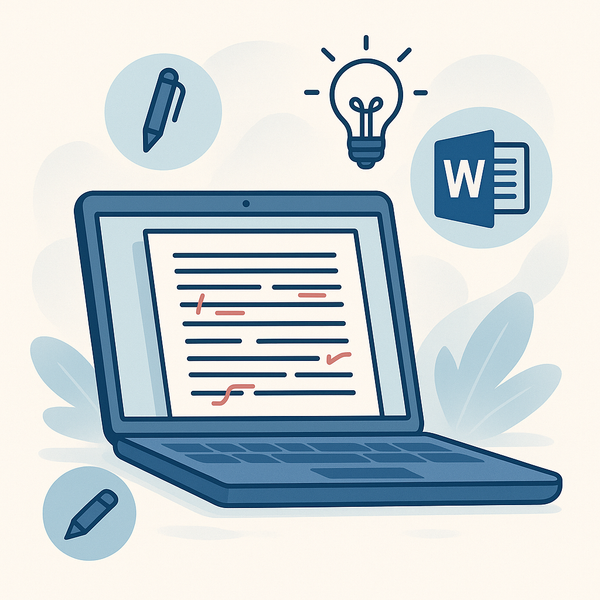With an end goal of crafting clear thoughts and organized ideas, Obsidian is a durable note-taking application with a robust suite of capabilities. Perfect for authors whom inspiration sometimes strikes like lightning, Obsidian is ready at a moment’s notice to store and process your thoughts, ideas, and prose. Although the program is meant for the everyman, we’ve dug into Obsidian’s capabilities to provide you with the top ten capabilities of the platform from an indie publishing perspective.
Write Anywhere. Truly.
Obsidian is built for cross-platform functionality, and authors are known to use multiple devices to turn words on the page into a book. From the cell phone to the computer to the tablet and back again, Obsidian is a true cross-platform application, and most functions within the app operate similarly regardless of the device. Authors can take advantage of this feature and know that their notes and stories can all be found in one place, with no transfers or file-dropping needed.
Knowledge is Power.
One feature notable to Obsidian is the web-clipper tool. Used to highlight and capture information from web pages and browsers, the web-clipper saves pages and metadata in a single click to your notes. The clipped pages are also available offline and saved to a vault for quick reference. Alongside the capture feature is a list of capture templates that dictate how information will be stored. Articles can include citations and footnotes; recipes with ingredients, steps, and nutrition; or if you’re feeling adventurous, custom templates you create for your preferred websites.
Make Obsidian into the Tool You Need.
Obsidian is all about giving you the flexibility and customizations you need. Using Obsidian’s advanced sync controls—a paid but affordable feature—you can decide what is shared across your devices. You may not want to share your on-the-go thoughts and ideas until they’ve been compiled and cleaned up, but Obsidian allows you to sync only what will make the cut. Think of this as J.K. Rowling’s napkin: great for first drafts and quick notes while allowing you to wait on syncing the project until the idea has been refined.
Keep Your Files.
Unlike similar platforms, Obsidian doesn’t use a proprietary file type for your projects. This means you can leave the platform at any time; your data is not exclusive to Obsidian, and should you decide to switch to another tool, Obsidian makes it easy to export your files so you’re not locked in to the platform. Obsidian also stores your notes on your device, so you can access them offline and maintain privacy. The platform notes, “No one else can read them, not even us.”
Pay Attention to Pricing.
Obsidian is priced competitively to other note-taking software. It’s free … or most of it is free, save for a few advanced features, such as cross-platform sync and the ability to publish pages to the web. For commercial purposes, the platform costs $50 a year per person, or $4.16 a month. Users can also pay for early access to features still in beta with a one-time payment of $25 or more to support the platform’s development.
Visualize Your Notes.
Authors who benefit from nontraditional planning and note-taking may want to take advantage of Obsidian’s visual space studio. There, authors can access a “playground for thought,” according to the website, organizing notes visually on a canvas instead of as a text document. PDFs, videos, audio files, and web pages can be incorporated in the document. Authors used to crafting detailed character sheets and inspiration boards can find all their notes in one place, regardless of medium, saving themselves from switching between tabs and screens.
Obsidian’s Roadmap Shows Where It’s Headed.
Like most platforms, Obsidian advertises its plans to add features and capabilities to the platform as it grows, but the creators have also provided a “roadmap” of the direction they want to take the company on the website: https://obsidian.md/roadmap. The roadmap shows past improvements and fixes and upcoming changes, offering transparency to the customer base. This roadmap is also an answer to the community’s requests, with many changes implemented being suggested by the customers directly.
Pro Tip: Join other Obsidian users on the community Discord channel. There, you can share your Obsidian “builds” and find tips and support from other users.
Customize Your Experience with Plug-Ins.
In addition to the optional features built into Obsidian, the platform also embraces plug-ins made by the community, several of which might be useful for authors looking to keep all their writing in one place. Available plug-ins are listed at https://obsidian.md/plugins and can be installed by following instructions listed on Obsidian’s support site. Also of importance in this community of applications is a ticker that shows how many times the plug-in has been downloaded, so you can gauge how well received the plug-in is before using it.
Explore Multi-Faceted Publishing.
Many authors have a blog or other outward-facing website. For $8 a month, Obsidian has a built-in publishing tool that will not only host your website and function as a blog but will also allow you to collaborate seamlessly with others on various projects. Within the publishing suite, authors can edit and publish changes in a few clicks, even on mobile devices. Obsidian has multiple view modes to include a graph view, stacked pages, and hover-over previews for viewing linked pages on your site.
Take Notes on the Go.
Like a true notetaker, you want to take your notes with you everywhere. Obsidian syncs in real time to Mac, Android, Linux, iOS, and Windows systems to keep all your notes current. Obsidian also recognizes that the internet may not always be available, whether you're on a plane or in a remote location. It is designed to work as well offline and will sync to the cloud once connections are reestablished.
Pro Tip: Obsidian has the capability of remembering the “version history” of every note, so you can easily see your note changes and identify the differences between them.
Obsidian does well to reduce friction for the average author looking to streamline their projects from ideation to notes to outline and to novelization. With a robust toolset, a community of supportive plug-in creators, and a low- to no-cost pricing structure, the platform may just be an improvement from many writers’ original workflow, minimizing the tools needed to jot down their thoughts and helping make sense of them when it comes time to write.
David Viergutz








